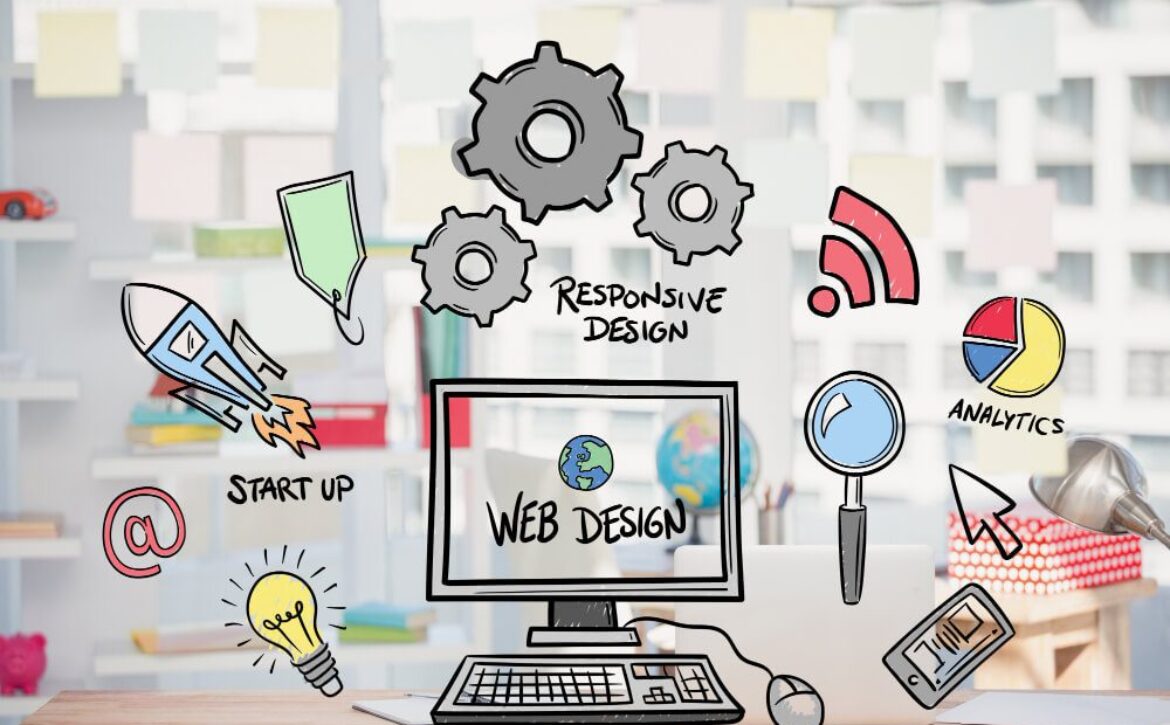Internet Design : A Full Detailed Explanation
GotitNow is a well-known internet design company in India, which builds a professional website for your business or shop at an affordable cost.
As far as the internet is concerned, web design is vital. Understand what is involved in this movement, the motivations behind why it is valuable, and the capabilities needed to achieve quality.
When was the last time you considered what went on with web design, and what are the processes involved?
Normally, we view the internet as a visual medium. Websites, applications, administrations, games, and so on need interaction points to give users the best experience. However, all depends on great design.
Web design plays an imperative role in boosting a business’s digital presence. This sort of information will enable any business to focus appropriately on the right arrangements when launching an item or service.
What is Internet web design?
The art of web design is arranging and organizing content on a website, so it can easily be shared and accessed via the internet.
In addition to the website’s tone, text style, and illustrations, web design also determines a webpage’s layout and its client’s perspective.
In the following sections, we will discuss a few subdivisions of website design.
Graphic design for the web
To establish a strong presence, the design must translate the brand’s identity to the web page. The visitor must understand that the page represents the business and see it as part of its presence.
Web design is the way a website looks. It incorporates everything from colors and fonts to the layout of its pages.
Interface design
is also part of web design. It refers both to traditional websites as well as to mobile apps, games, and computer software, among other products.
A user interface is anything that connects the user with the system. It should be simple, intuitive, and customized to the audience’s needs.
UX design
Good user experience is equally important to the design and feel of a digital interface. Creating a truly worthwhile experience requires understanding your users’ needs and meeting those needs.
Interacting with your business should always be a positive experience for your clients, which means no barriers and achieving their objectives every time.
Search engine optimization
Adding search engine optimization (SEO) to your website will ensure that Google and similar sites properly index your content. As a result, your content will rank higher in search engine results, reaching a larger audience looking for your solution.
In addition to content writing, web design plays a part in making sure your website is code-friendly.
Keeping the code clean will ensure your website is easy to navigate. All of those factors play a major role in determining your ranking.
Why is internet design so crucial?
Designing a website helps people perceive your brand the way you want them to. You can attract the right audience to your business and convert them into customers by adopting the correct visual marketing strategy and approach.
Customers are more likely to consider doing business with a brand that offers consistency and projects trust.
When it comes to engaging with your consumers, a well-structured website with high-quality graphics, compelling content, and easy navigation can offer you an advantage over your competitors.
What factors should be taken into account when designing a website?
Aesthetics
Web design must be able to convey your brand’s identity clearly and succinctly. Make sure your online presence matches your colors, styles, and feel.
But be mindful not to overdo it, as too many elements tend to slow down your visitors’ experience.
Solid navigation
When users access your site, they want to access information quickly and easily. Your navigation system must be simple and self-explanatory for leads to remain on your page.
Responsive design
is more important than ever. Your audience will access your site from different devices, including smartphones, tablets, and desktop computers.
To have a successful website design, you must integrate responsive design.
Content quality
The audience visits your website to find valuable information they need.
Consistency is important for writing good copy on your website, so that it aligns with your style of writing. Your website’s content is just as important as its design.
Speed of the Website
Web speed is an important element of web design, because it ensures your audience can access information quickly.
What are the top 5 internet web design principles?
- Planning and executing your design without considering your target audience could hinder your company’s ability to attract the right customers.
- Make sure your visuals are consistent across all channels – online and offline.
- Too many elements divert the user and weaken your brand’s presence.
- Documenting every stage of your web design is necessary, so it can be checked and referred to in the future.
- Having a call-to-action (CTA) button to guide prospects to the next stage is a bonus point.
A web designer must have the following skills & tools:
Web design tools
The first step to choosing the right tools is learning what the job requires, who you’re targeting, and where you’ll be using them.
There are plenty of tools that streamline and standardize web design work.
Examples – Photoshop, Sketch, WordPress, Wix, Figma, Vectr, Bootstrap, Adobe Spark, Dreamweaver, Proofhub, etc.
Communication
Web designers work closely with other professionals, so good communication is vital for the completion of any project. This includes a clear understanding of project criteria and communicating well with others.
A web designer is responsible for a business’s visual presentation, so they are required to understand how their decisions fit with the project’s objectives and specifics.
HTML / CSS
Working on web design requires programming knowledge. The main languages required are HTML and CSS, each performing a different function.
When writing in HTML and CSS, an experienced web designer uses the right tags and values to apply the planned design. The result is a website that accurately shows elements.
UX/UI
Since web designers work with interfaces, they must be skilled in UX/UI. Despite being commonly used in conjunction, those are different concepts.
Designing UX involves understanding what your target audience wants from whatever you are creating, whether it’s a website, an app, or anything else.
The purpose of user interface design is to create an easy-to-use interface so that your product or service can be used by anyone, regardless of their technical ability. Designers need to be skilled at creating user interfaces that people can easily use.
Search Engine Optimization (SEO)
Web design plays an important role in making sure the content is indexed correctly by search engines and provides good visibility to its business.
Most of a website’s assets contribute to its ranking, including text, images, and code. This too requires knowledge of how content management systems work and can be optimized.
Time Management
As web designers, our time management skills are also crucial. We need to find ways to accomplish our goals within specifications, while staying on schedule.
Web designers should work around the budget and deadline of each stage. It can be harmful to a business if a task takes a long time to complete. Each stage should be projected using the budget and deadline.
List of guidelines for every Web Designer to adhere to for a successful website:


- The website’s look and feel are critical. It’s where visitors form their first impressions, those split seconds when we decide whether to accept or reject what they see.
- Defining the purpose of your website should be clear & direct, i.e. e-commerce, portfolio, showcasing your product/service, etc.
- When the user visits your website, are they gaining any information/knowledge?
- When designing a website, you should already have an idea of your targeted audience.
- Making a responsive website is the key goal for every web designer.
- The Rule of Simplicity – Less is more: Many sites are overdesigned, with too many elements on the page, distracting users from their intended purpose. It is important to keep your design simple, so users can navigate it naturally.
- Using design elements and white space in an innovative way creates a less distracting, more appealing design and clarifies where the visitors are meant to go. Negative space enhances readability, draws attention to important content, and creates an enjoyable user experience.
- Typography is an essential part of web design. Using the right fonts explains your brand personality and immediately grabs the audience’s attention. As part of your web design, you must choose typefaces that are readable and functional across all types of devices.
- When the user visits the website, they should easily understand every phrase, word, headline, image, etc. Each visual element and all site content must be presented clearly and cleanly, with a focus on crucial conversion points.
- Whether it’s telling a story, showing how a product works, evoking emotion, or creating an atmosphere, images are integral to web design. There is a saying that a picture tells a thousand words. Use images that represent your business aesthetics.
- Consistency is a key element of web design, i.e. fonts, images, buttons, icons, layout, and other elements should be uniformed & spaced out across your branding. That will help your website have a polished and professional appearance, which boosts brand credibility.



